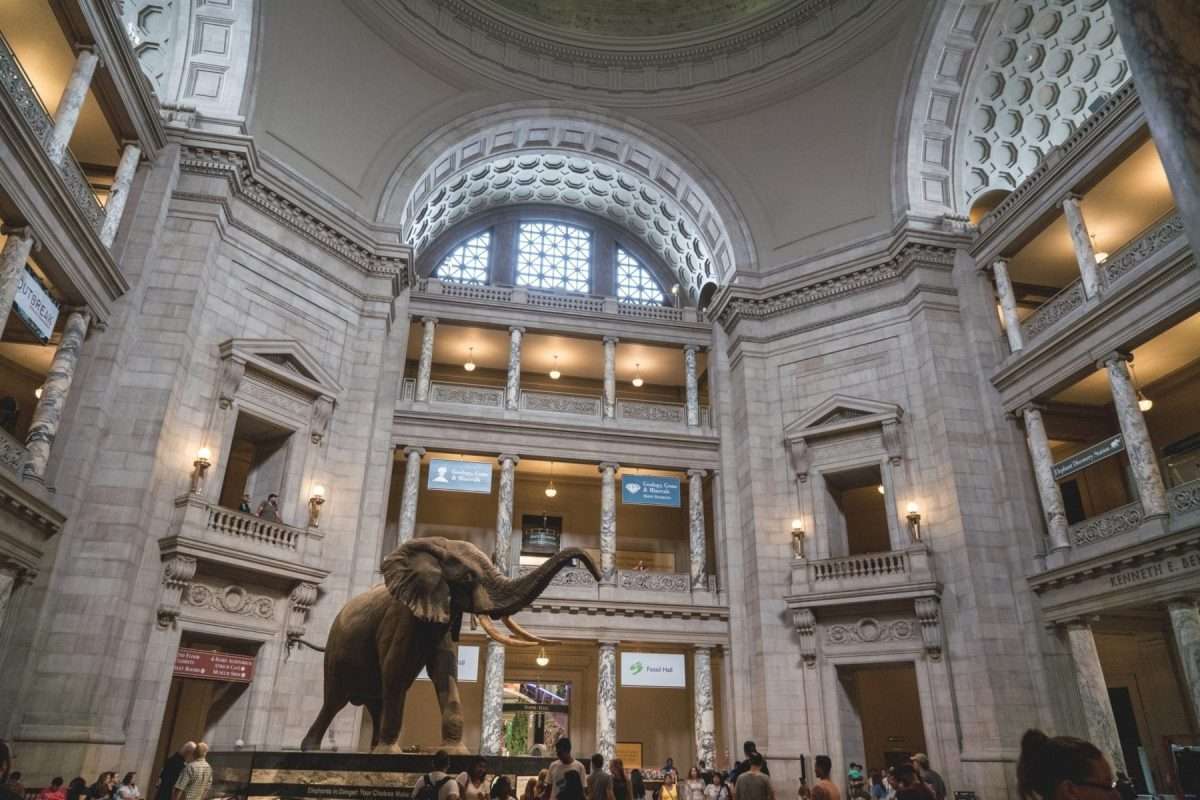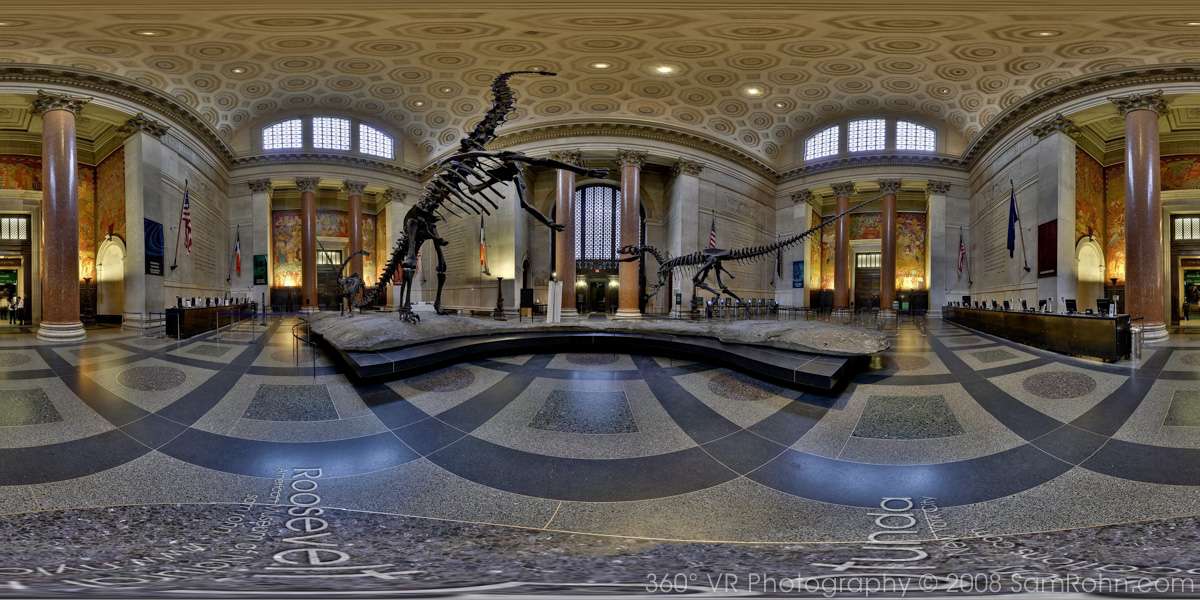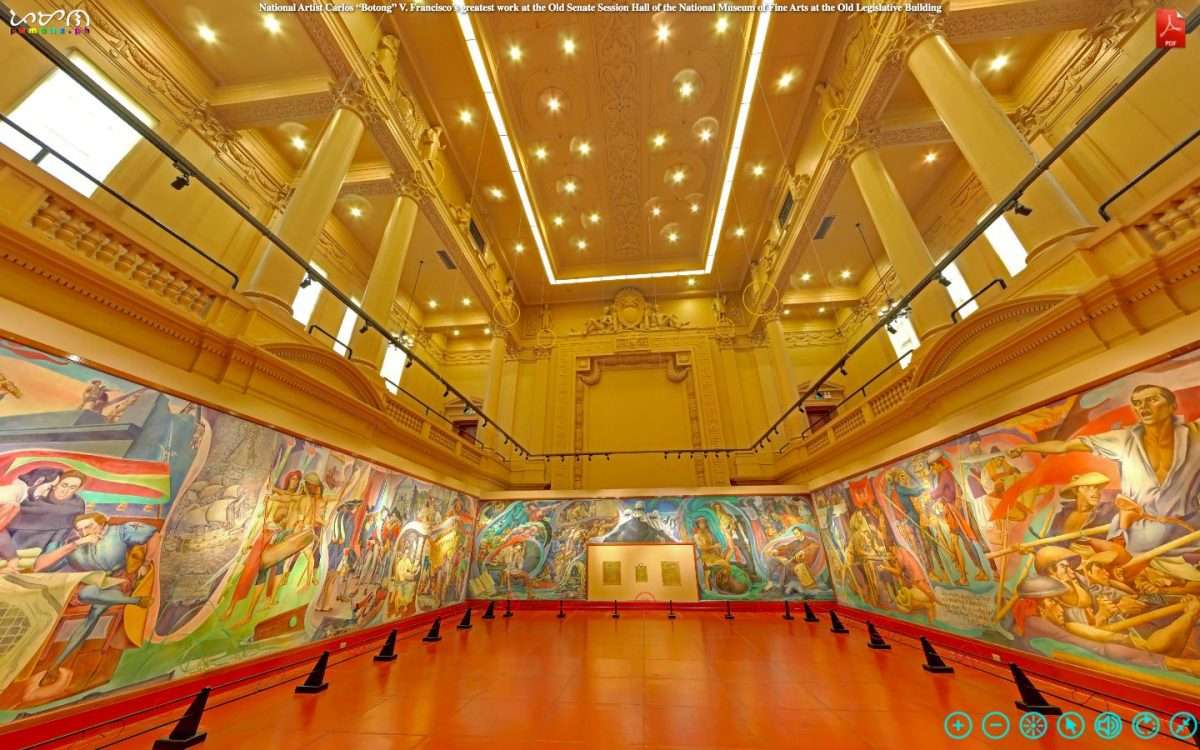Etruria And Rome Galleries Tour
Learn more about the Penn Museums important collections from Etruscan and Roman Italy. This tour covers eight themes and objects, from burial practices in early Italy to those at the at the height of the Roman Empire. Discover more about everyday objects like glass vessels and lamps, ceramic manufacturing, Etruscan architecture,and an erased Roman imperial inscription.
La Galera De Mxico Y Amrica Central
Examine ocho objetos, sitios o temas de Centroamérica y México, desde el 1,200 a.C hasta prácticas patrimoniales contemporáneas. Esta visita virtual lo llevará desde las más antiguas figuras Olmecas a representaciones contemporáneas del dios azteca, Ehécatl. Aprenda más sobre los sitios de Teotihuacán y Sitio Conte, el desciframiento de los glifos mayas, jarrones de mármol Ulúa, y orejeras aztecas creadas dentro las dinámicas del dominio colonial español. La visita también aborda el papel que toman los museos y las excavaciones de Penn dentro del patrimonio cultural de esta región.
Indiana State Museum Virtual Tour
The Indiana State Museum houses exhibits on the science, art, culture, and history of Indiana from prehistoric times up to the present day.
The original collection started in 1862, during the Civil War, when the State Librarian began collecting minerals and other curiosities. In 1869, a state geologist was assigned the task of organizing the collection.
The collection quickly developed when hundreds of cultural items, many relating to the Civil War, were added. A new facility was finally opened in 2002 on the Indiana Central Canal in White River State Park.
Today the museum has over 500,000 artifacts that cover the history of the natural world, Native Americans, the cultural history of Indiana.
The Indiana State Museum and Historic Sites is a statewide institution with 11 historic sites spanning the state.
The historic sites include Angel Mounds, an archaeological site with surviving major earthwork mounds built by the Mississippian culture about 1000 CE.
The Settler Exhibit Indiana State Museum
Don’t Miss: Museum Starry Night Van Gogh
New Initiatives: The Implementation Of Nagpra
NAGPRA provides a legal mechanism for the 574 federally recognized tribes of the U.S., Alaskan Native Villages, and Native Hawaiian organizations to make claims for human remains, associated funerary objects, sacred objects, and objects of cultural patrimony held by American museums and agencies that receive federal funding.
National Museum Of The American Indian Virtual Tour

The National Museum of the American Indian is a museum focused on the culture of the indigenous peoples of the Americas.
The museum has three facilities:
- The National Museum of the American Indian on the National Mall in Washington, D.C.
- The George Gustav Heye Center is located at the Alexander Hamilton U.S. Custom House in New York City.
- The Cultural Resources Center, a research and collections facility, is located in Suitland, Maryland.
The foundations for the collections were first assembled in the former Museum of the American Indian in New York City, which was established in 1916. It became part of the Smithsonian in 1989.
National Mall, Washington, D.C. Branch
The Washington site is the first national museum dedicated exclusively to Native Americans. The curvilinear building is clad in a golden-colored Kasota limestone designed to evoke natural rock formations shaped by wind and water over thousands of years.
Simulated wetlands surround the museum. The museums east-facing entrance, its prism window, and its space for contemporary Native performances are the result of consultations with Native peoples.
Native Americans have designed the operation of the museum aiming to create a unique atmosphere and experience.
A theme of organic flow is reflected in the museum, with walls mostly of curving surfaces, with almost no sharp corners.
Piikuni elk-skin robe with painted decoration by Mountain Chief, the mid-1800s
Heye Center, New York City Branch
Recommended Reading: Cabins For Rent Near Creation Museum
Ute Chief Ouray’s Artifact Case
The mug in this display case of some of Chief Ouray’s artifacts was given to Ouray by United States President U. S. Grant .The mug is made of silver. It has a handle and has a capital “O” engraved on the side. Later, Ouray presented this mug to J. E. Gardner whose son Frank donated the object to the Colorado Historical Society in 1937. Another interesting object in this display case is the knife that belonged to Chief Ouray. The knife has a bone handle and steel blade. It is decorated with brass circles. Gordon Kimball, of Ouray, Colorado, later owned the knife. At his death, William Rathmell became the owner and his son Henry donated it to the Colorado Historical Society in 1958.
Local Nations: The Creation Of Turtle Island
The Delaware Valley is the ancestral home of the Lenape people. While the colonization of North American by Europeans forced many Lenape communities west, several remained and still live in the area today. One way we can learn more about the Lenape people and their enduring cultural identities is through their creation story, which tells of Turtle Island.
Don’t Miss: African American Art Museum Atlanta
Highlights Of The National Museum Of The American Indian
- American Indian weaved and leather artifacts
- American Indian Horse culture artifacts
- Exhibits on the history of the American Indians
- Arts and Crafts covering over 800 years
- Replica Teepees and domestic tools
- Collection of American Indian clothing
- A Parfleche collection of rawhide artifacts embellished by painting and incising
- Exhibits from the different American Indian nations and cultures
The National Museum of the American Indian curvilinear building is clad in limestone, Washington, D.C
Virtual Field Trip: Native American Stories
Three storytellers shared unique insights from their experiences as Native Americans in the National Geographic Virtual Field Trip: Native American Stories. We traveled to New Mexico where a dedicated conservationist reinvents maps through the Zuni Map Art Project. Then, we visited the Flathead Reservation in Montana where a photographer challenges stereotypes through journalism. And finally, we took a quick trip to Ontario where a 20-year-old artist examines what it means to be Indigenous in a colonialist world.
The program is now available on our YouTube channel and features:
To learn more about Native American heritage visit NatGeoEd.org/NAHM.
Subjects: Geography, Social Studies, History
Content recommended for grades 4-8
This Virtual Field Trip is hosted by Krista Strahan, and is presented in partnership with the DC Arts and Humanities Education Collaborative.
Read Also: Art Museums In Orange County Ca
Who Are The Utes
The Ute Name: “Known to other groups by many names, the Utes referred to themselves as Nuche, “the people.” In the southwestern part of their homeland, the Utes were called “Deer Hunting Men” by the Zuni and the “Mountain People” by other Pueblo communities. Out on the plains to the east, they were known as the “Black People” to the Cheyenne because of their dark skin color, and as the “Rabbit Skin Robes” to the Omaha and Ponca peoples. The name by which we now know them came from the Spanish terms Yutas, Uticas or Utacus.”
“The Utes are the longest continuous residents of Colorado. While it is not known exactly when the first of their people came from the north and west, they had lived in their mountain and plateau homeland for centuries by the time the Spanish arrived in the 1500’s. Their original territory stretched across portions of the Colorado Plateau, Utah, New Mexico, and Arizona. In 1800, just before the influx of Euro American traders, miners and settlers, the Utes occupied an estimated 140,000 square miles of territory. Their nomadic existence was based on hunting large and small game and gathering the grasses, roots, berries and fruits native to the area.”
More About This Topic
Ute History
The Utes Today
The Coming of the Horse
Penn Museum Virtual Guided Tours
Bring the insight and awe of a Penn Museum guided tour directly into your home or classroom! Graduate Guide Virtual Tours are now available for a range of Penn Museum galleries. Tour presentations are narrated by Penn Museum Graduate Guides, Penn PhD or masters students working in the fields of archeology and anthropology. Follow along as they virtually lead you through the galleries to explore objects on display and in storage.
Interested in learning more? Book a live 30-minute Q& A session with a Penn Museum Graduate Guide and allow your family, group, or class to participate in a deeper discussion with one of our experts! These sessions must be arranged in advance and availability is subject to Graduate Guide schedules.
Don’t Miss: Children’s Museum Portland Or
To Register For A Virtual Tour:
Our tour availability can be viewed on the calendar below. Fill out a registration form and email to .
- Zoom tours can accommodate up to 90 students, and are available for a class, or a section of classes from the same school. These 45-minute tours include the video/audio function and time for questions and answers. Please review the calendar for Zoom tour availability on Tuesdays, Thursdays, and Fridays.
Mexico And Central America Gallery Tour

Examine eight objects, sites, or themes from Central America and Mexico, from around 1,200 BCE to contemporary heritage practices. This tour takes you from the earliest Olmec figurines to contemporary representation of the Aztec god Ehécatl. Learn more about the sites of Teotihuacán and Sitio Conte, the decipherment of Maya glyphs, Ulúa marble vases, and Aztec earspools created within the dynamics of Spanish colonial rule. The tour also addresses the role of museums and Penns excavations within this regions cultural heritage.
Also Check: African American Museum Dc Same Day Tickets
Richard Diebenkorn At The Cantor
“All paintings start out of a mood, out of a relationship with things or people, out of a complete visual impression. To call this expression abstract seems to me often to confuse the issue. Abstract means literally to draw from or separate. In this sense every artist is abstract… a realistic or non-objective approach makes no difference. The result is what counts.”Richard Diebenkorn
This virtual tour explores the ongoing exhibition Richard Diebenkorn at the Cantor, an intimate and interactive installation that presents works by famed Bay Area artist and Stanford alumnus Richard Diebenkorn, 49.
First an art student and later an artist-in-residence at Stanford, Diebenkorn always carried a sketchbook, often capturing what he saw before him, including landscapes and gures, mostly in graphite, and black and white.
The paintings and sketchbooks featured shed new light on the artists process, including his shift in style from guration to abstraction. Included in this virtual tour are Ocean Park #94 , part of Diebenkorn’s expansive Ocean Park Series Window , Disintegrating Pig and BuildingsHill Background .
Arboretum And Activity Area
Our Arboretum area is based on unique resources from Charles Bud Thompson. As a young man, Bud worked at Arnold Arboretum in Boston, Massachusetts. When Bud opened the Museum, he knew he wanted an Arboretum to continue providing educational experiences for visitors, school children and the surrounding community. Be sure to pick up your guide in the mail box as you enter the activity center.
Recommended Reading: Hotels Near The Lightner Museum
The Rockwell Has Converted Several Of Our Most Popular School Tours Into Virtual Learning Resources For Teachers And Families That Support Grade
These free, curriculum-aligned videos are designed for use in a variety of learning settings and will be broken into short segments to use as you would like. All we ask is that you provide some basic information about yourself and your classroom so we can continue to offer important virtual opportunities like this one. After completing a short form, a link to the materials will be sent to your e-mail address automatically!
Rock Art And Engravings 360 Tour
There are around 140 rock art and 240 engraving sites that the AHO monitors within the six partner councils. These sites are found all over Sydney. Take a tour around some of the local sites to learn more about the rock art and engraving sites that you might see around the area. To view in Fullscreen, click the options menu .
Recommended Reading: Virtual Art Museum Tours Online
A Virtual Adaptation Of In The Spirit Of Our Ancestors
This tour is dedicated to the Chumash people native to Southern California. It is a 3rd-5th grade tour exploring the history of the Chumash people in Ventura County. Students will learn about Chumash material culture and lifeways, as well as explore the natural resources used for food, clothing, tools, and medicine.
Colorado Indians Tour One
This virtual field trip is a tour of the Ute Indian Museum. The museum is located in Montrose, Colorado.
It is devoted to the history and culture of the Ute tribes and to the life of Ute Chief Ouray and his wife Chipeta. The Colorado Historical Society runs the museum.
This virtual tour can give you only a glimpse of the contents and richness of the Ute Indian Museum. The virtual tour will show you some of the items exhibited here. It will provide you with as much information about those items as space allows. We urge you to visit the museum whenever you are close by.
Don’t Miss: National Museum Of Funeral History
Ute Weapons And Tools
In the top right hand corner of the display case is a Ute rifle casing. It is made of buckskin with buckskin fringe and includes a variety of beads and wool cloth. The donor’s father, Allen Haskill, got the casing from an Indian believed to be Ute. Haskell was a gate keeper on a toll road between Ridgway and Placerville, Colorado. The Indian sold this casing to Haskill to pay the toll and for pocket money. In the bottom right hand corner of the display case is a knife and knife sheath. The knife has a wooden handle and the blade was made from sheep shears in about 1893 . The knife sheath is made of rawhide and is beaded on one side. This item is on permanent loan to the Ute Indian Museum.
More About This Topic
On the left side of the display case you can see several items important to the Utes.
Quiver and Bowcase – The bow case is made of buckskin and sewn with buckskin thongs. The quiver is also made of buckskin and is fringed and painted with several colors.
Bow and Arrows – The bow is made of wood and is backed by sinew to give the bow more strength. The bowstring is also made of sinew and is about three and a half feet long. The arrows are also wood and the iron point and feathers are attached to the wood with sinew.
“Skull Cracker” – The skull cracker has a wooden shaft, a large stone at one end, and a horsehair tail at the other end. Because the decoration is rather simple, it is believed that the club could have been made before 1800.
Ute Chief Buckskin Charlie’s Headdress

The headdress in the photo belonged to Buckskin Charlie. It was given to Barry Sullivan in about 1936 when he was dying and was adopted into the tribe. Marie Andrews donated the headdress to the Colorado Historical Society in 1961. The headdress has a single trail of eagle feathers mounted on buckskin. The feathers are dyed orange and light blue. The headband at the top of the bonnet has white, light blue, red and yellow beads.
Read Also: Where Is The Vincent Van Gogh Museum
Whats Inside The National Museum Of The American Indian
The NMAI provides its first wow! moment before you even walk in the door. The building is one of DCs most visually striking, with its curvilinear structure and limestone material designed to resemble rock formations affected by wind and water over thousands of years.
Visitors at Smithsonian National Museum of the American Indian on the National Mall – Free Smithsonian Museum in Washington, DC
The museum’s collections represent more than 12,000 years of history across 1,200-plus indigenous cultures from the Americas. These objects range from the aesthetic to the religious to the historical, helping to form a comprehensive catalogue of Native American culture.
Ongoing exhibitions at the museum include Return to a Native Place: Algonquian Peoples of the Chesapeake, which allows you to meet the Native peoples of the Chesapeake Bay through maps, ceremonial objects, photographs and interactive displays. These details can help you have a deeper understanding of just how prevalent Native Americans were, and are, to the areas surrounding DC.
Native American Voices Gallery Tour
Take a closer look at the Penn Museums North American collections and learn about Native American communities past and present. The tour covers six themes, from the enduring presence of local Native peoples to some of the oldest stone tools ever recovered in North America. Find out more about sacred places for Native peoples and their efforts to protect them, legislation that strives to ensure Native sovereignty and the return of cultural objects, how Native communities celebrate their cultural identities through practices such as lacrosse and powwows, and contemporary Native artists.
7 Tour Stops
You May Like: Contemporary Art Museum St Louis
Formed And Fired: Contemporary American Ceramics At The Anderson Collection
The practices of four living artists whose exploration of clay provides commentary on its past and insight for the future are presented in Formed and Fired: Contemporary American Ceramics at the Anderson Collection at Stanford University.
Formed and Fired: Contemporary American Ceramics presents the work of four groundbreaking contemporary artists whose practices provide insight into the past and ideas for the future. Kathy Butterly, Kahlil Robert Irving, Simone Leigh, and Brie Ruais are pushing the boundaries of ceramics and exploring questions of value, identity, materiality, and the body. While distinctly different, they share a reverence for the medium and its rich, and sometimes complicated history. Together, they provide extraordinary insights into ceramics expressive qualities and capacity for individual expression.